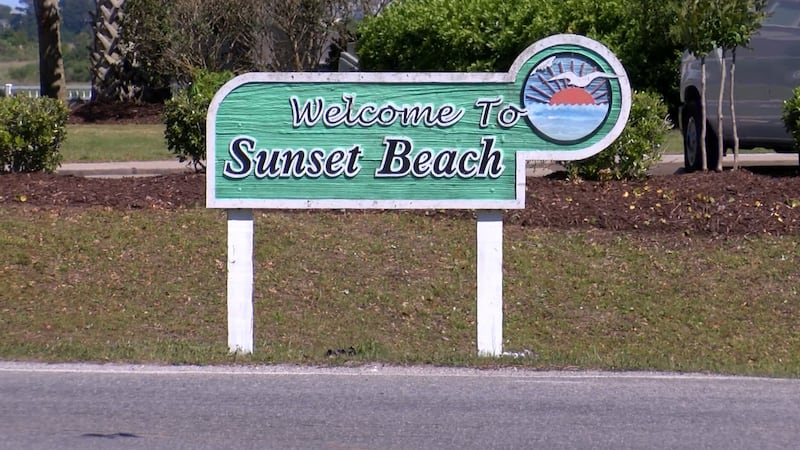'It's pretty bad': Lab testing of NC stormwater positive for fecal bacteria, WECT investigation reveals
SOUTHEASTERN, NC (WECT) - A WECT investigation discovered bacterial contamination, including pathogens found in feces, in stormwater samples from Southeastern North Carolina.
Stormwater collected from Halyburton Park and Carolina Beach Road/River Road tested positive for high levels of fecal bacteria, possibly from sewage.
"It's pretty bad. I would not suggest walking, swimming... and if you do, wash your hands," said Matt Groff, who helped lead the water testing. "Typically, floodwater is nasty, however, I didn't realize it would have that much bacteria count."
Our news team collected stormwater samples from Sago Bay Drive, Empie Park, Halyburton Park, Carolina Beach Road/River Road on July 31.
Then the Chemical Technology Laboratory at Cape Fear Community College tested our stormwater samples for three indicators of water quality: Total and fecal coliform bacteria, metal concentrations, and TOC (total organic carbon).
Total coliform bacteria is a large group of microorganisms that aren't harmful to people but are indicators that more dangerous bacteria, viruses, and parasites might be present.
"Total and fecal coliform bacteria are indicating bacteria," said Groff. "They don't think they will hurt us in any way, but if they are significant in a large amount of colonies and counts like we saw here, that means it's highly probable that (more harmful) stuff is present as well."
Millions of fecal coliform bacteria are found in the intestines of humans and animals, and a positive test in water means that feces and harmful germs causing diarrhea, dysentery, and hepatitis might be in the water, according to the U.S. Centers for Disease Control and Prevention.
Total organic carbon is a general measure of water purity. Drinking water normally runs around 2 parts per million, and river water runs around 12-15 parts per million, Groff noted in the lab results.
A higher TOC is worse, said Groff.
"Stay out of floodwater," warned Groff after seeing the lab results. "The bacteria counts just blew me away though. Absolutely blew me away."
Halyburton Park
Halyburton Park's stormwater tested at the highest levels of fecal bacteria among our samples but came back as the cleanest for a general water purity test.
The park's stormwater cultures for total and fecal coliform bacteria were at amounts "too numerous to count."
"Probably because of all the pet walking (at Halyburton Park)," Groff said. "They clean it up the best they can, they grab it, they put it in a plastic bag, but it doesn't clean it all up."
Groff speculated that the fecal bacteria in Halyburton Park's stormwater might also be from human sources.
"It could have been a pipe to the sanitary system, with all the flood water," said Groff.
The total organic carbon was measured at 8.88 parts per million in the water, meaning that it's cleaner than river water in terms of organic material.
Tests for metals in Halyburton Park stormwater did not turn up any significant findings.
Sago Bay
The stormwater at Sago Bay was the most contaminated in terms of a general water quality test.
The lab results show very high levels of total organic carbon at 32 parts per million, which is a non-specific indicator for water purity.
"This water is pretty filthy," Groff writes in the lab report. "Where is the filth coming from? We really don't know unless we do more studies on other equipment, which will take time."
Total coliform bacteria levels were extremely high in Sago Bay stormwater, meaning the water probably contains other, disease-causing microorganisms. Lab tests came back negative for fecal coliform bacteria.
The Sago Bay water was the only sample that contained notable levels of a metal, which was iron at about 0.2 parts per million.
"Sago Bay had the highest. But it was 0.2 parts per million, which is minor," said Groff.
Carolina Beach Road/River Road
Lab tests revealed that the ponded water at Carolina Beach and River roads was the second-highest contaminated for a general water quality test, and positive for bacteria found in feces.
The total organic carbon concentration was 19.7 parts per million in the stormwater, meaning the water is about as dirty as a river.
Like the other three water quality samples, total coliform bacteria cultures showed very high levels in the water. Tests for fecal coliform bacteria, which includes E. coli, came back as "too numerous to count" on bacteria growth plates.
"You want to stay away from the water," Groff noted in the lab results.
Tests for metals did not turn up any significant findings.
Empie Park
Stormwater built up at Empie Park had very high bacteria levels and ranked as the third worst for water purity.
The total organic carbon concentration was 13.5 parts per million in the stormwater, meaning the water is about as dirty as a river.
As with the other stormwater samples tested, total coliform bacteria tests showed very high amounts, meaning worse, disease-causing pathogens are likely in the water.
Tests for metals in Empie Park stormwater did not turn up any significant findings.
All results in a table:
| Stormwater location | Total Coliform bacteria | Fecal Coliform Bacteria | metal concentrations | TOC (total organic carbon) |
| Sago Bay Drive | Very high | Negligible | Iron - 0.205 parts per million | 31.7 parts per million |
| Empie Park | Very high | Negligible | Negligible | 13.5 parts per million |
| Halyburton Park | Very high | Very high | Negligible | 8.88 parts per million |
| Carolina Beach Road/River Road | Very high | Very high | Negligible | 19.7 parts per million |
Very high means that the bacteria count was too numerous for the lab to count. Fecal coliform bacteria at Carolina Beach Road/River Road and Halyburton Park are estimated greater than 40,000 counts per 100 mL.
Watch WECT News tonight at 5 and 6 p.m. for the full report.
Copyright 2018 WECT. All Rights Reserved.









